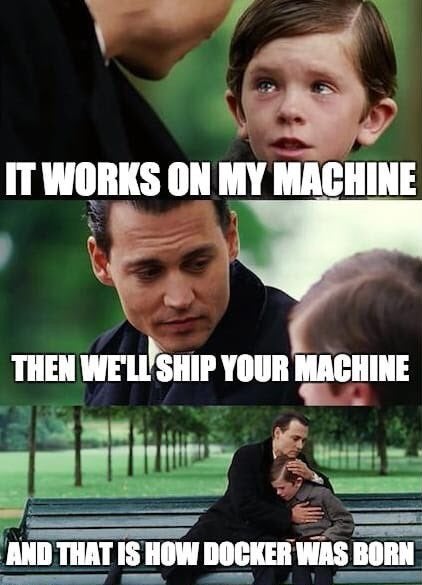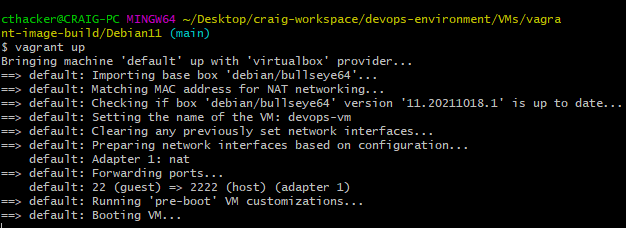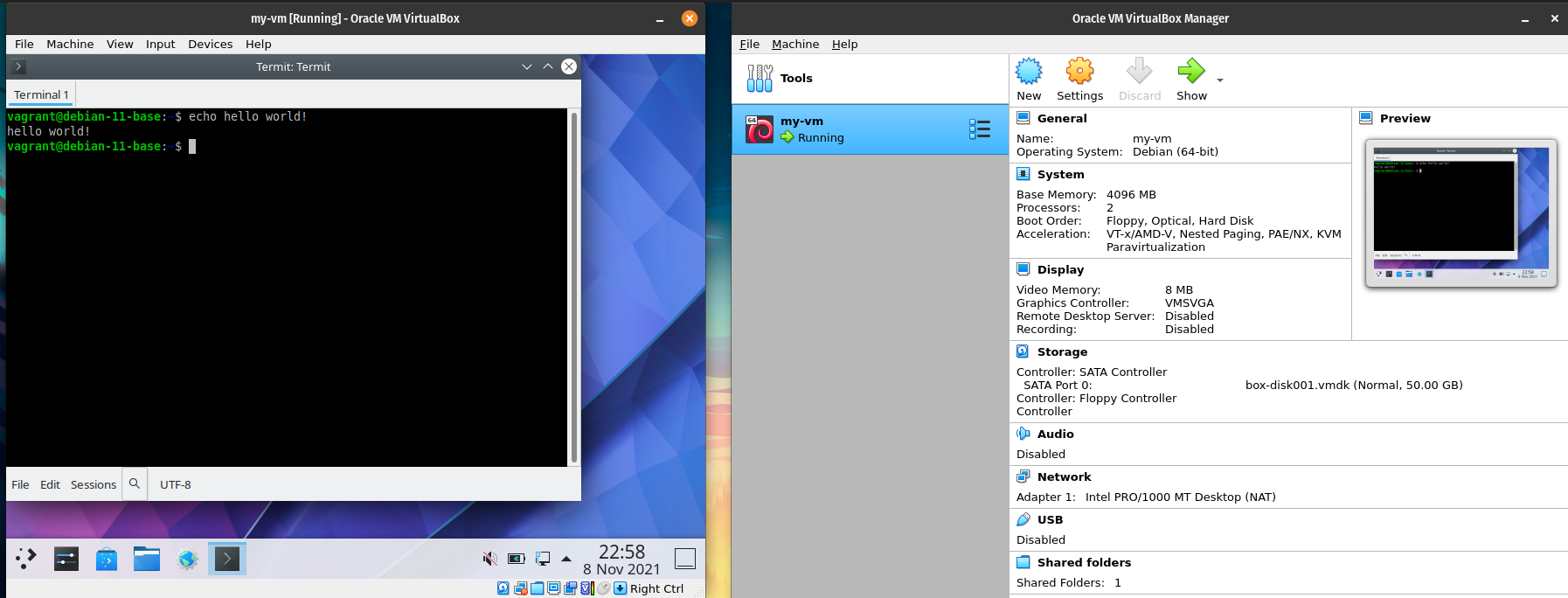One thing that can be a huge pain when working in modern IT is the need for a developer ‘space’. It is a constant struggle between the release of newer and greater products, and the need for engineers to make these product’s production ready. I have (and I wish I was kidding) seen job postings which require 10 years Ansible experience for highly sensitive government projects that required large amounts of experience as an essential criteria. Ansible was released in 2012 and I am writing this post in 2021…But, I digress.
A question that I often get in my career is “Can you show me how you did that?”. I wish it was as easy as saying “sure click these 2 buttons a voilà!”, but, it’s not. More than once have I had the “this doesn’t work for me, its bugged.” only to run it through my own debugger and see it works exactly as I intended - “It’s not a bug, it’s a feature” is a common phrase in these types of situations.
I often do my best to do a “documentation script” and fill in the README.md as I go - which is, writing down every command I do when setting something up for the first time and then documenting any strange outputs, followed by running that script to see if I can produce the same result on a fresh machine. It is prone to human error as you can imagine. Tools like Ansible, mentioned prior, have made these type of tasks redundant, but when you are doing something bespoke for a customer, I highly doubt you will find an Ansible module for it! Sure you can write your own, but where? how much does that cost? what is the level assurance you can provide that it will work in production?
Infrastructure as Code (IaC) and the invention of Docker have helped mitigate these problems (as well as Ansible!), but how many of us are even using these products day-to-day?, And in our development environment? “IaC is for production immutability!” you may be shouting as you sharpen your pitchforks and light your pyres. “No it’s not” is my response. There are several infrastructure as code tools you can use to give yourself that immutable infrastructure in development, free of charge and it can be very quick, when shown how to get setup.
Linus Torvald’s once said:
Talk is cheap, show me the code.
and this post is dedicated to that, for people who want to get setup in a development environment and begin DevOps best practices locally, and begin providing some continuity in your development. If it works in dev, its more likely to work in prod after all right?…right?
Anyway, there are far too many products to cover in 1 blog, and everyone’s workflow can be completely different, which makes this very hard topic for someone to tell you what is best and how to do things securely for your environment, so my hopes for this post is to get you running your own VM made in IaC by the end.

It will be up to reader to improve and iterate on this to meet your own demands, this article aims to inspire, not to solve your production code issues! And for every product someone likes (I like all the above, of course), there are 3 more which someone will discredit the others citing superiority. But as I said, this blog’s goal is to inspire, so please put the pitchforks down!
FYI, I am storing all my source for this on my GitHub, in the Devops Environment repo. I am purposely going to emmit full lines of code from this article and link the repository where appropriate, posting anything outside a couple of lines always does irritate me on blogs, especially when I want to copy and paste some of it!
My environment
Right now, I am running this lab on my Desktop which is running Windows 10 latest. Most of these tools are cross-platform or will run hapily in Windows Subsystem for Linux or a VM, so it makes sense I pick the one with the most firepower to save me time. My laptop will feature in later which is running Pop_OS! latest
Vagrant
Vagrant is (another) great tool by HashiCorp, it essentially allows you to produce a local development environment in a simple Infrastructure as Code style using Ruby syntax. Local development (as in, physically on the device I am typing on) is not something I am doing a lot of these days, as I have an environment I can test deployments to in Azure, but nonetheless, if you are developing locally for whatever reason, then Vagrant might be the answer you are looking for.
I have had some Vagrant images posted in the past when I did do more local development, which are Ubuntu 18.04 and quite out of date now, so for this series, I want to try and a more up to date one.
I have split this into 2 parts:
- The Base Image - This is the image taken from the Vagrant Cloud.
- The Custom Image - An Image I am going to iterate over for my own use.
And for this, I am going to use Debian 11. Why? I had originally considered RedHat due to the new subscription model, and this is what many of us Linux users are using in Production anyway, but I didn’t know the legality of using RHEL images on the Vagrant Cloud, and wanted something completely free. Why not Fedora, RockyLinux or AlmaLinux? Mainly because I want to pickup something which could go into production for someone, so if not RHEL, then the Debian/Ubuntu family is the next logical step for most veterans. So I’ll put my Justin Bieber Linux away for another day.
Another point to use Debian is the inclusion of Podman into the upstream repositories, where I will reuse my base image later for demonstrative purposes.
Vagrant Quick Install and Initial Prep
As I said, I am currently running this on my Windows desktop - and I already had Chocolatey installed, so installing vagrant and virtualbox was as easy as:
choco install vagrant virtualbox -y
One other quick thing to prep was installing the VBguest plugin to vagrant:
vagrant plugin install vagrant-vbguest ; vagrant plugin install vagrant-disksize
Step 1 - Picking my base image
For me, this was straight forward, I went on Vagrant Cloud. and searched for Debian 11’

Next, I prepared a trusty Vagrantfile:
# -*- mode: ruby -*-
# vi: set ft=ruby :
Vagrant.configure("2") do |config|
config.vm.box = "debian/bullseye64"
config.vm.hostname = "debian-11-base"
config.vbguest.auto_update = false
config.disksize.size = '50GB'
config.vm.provider "virtualbox" do |v|
v.cpus = "2"
v.memory = "4096"
v.name = "devops-vm"
end
#Check the repo for the full version!
And ran vagrant up:

And then waiting some time for the scripts to run…
Finally, I am given my now complete VM in VirtualBox ready to log in.
I can log in either VirtualBox “Show”/console or I can run vagrant ssh to automatically connect.
As per the spec and Vagrantfile, the default user is vagrant and the password is vagrant.
Step 2 - Uploading my Custom Image to Vagrant Cloud to be used on my other development areas
Finally, I need to package my box. I can do this by following the documentation and running:
vagrant package --base devops-vm

After this is complete, I am finally ready to upload my box to the vagrant cloud! I now need to take a SHA256 sum of my “package.box” file which was created with the last command:
sha256sum package.box
f2702062e452accc50a6989657488c2031c2ade55893709f37d99e3a1149ff9d *package.box
And then create a new box on the vagrant cloud, set my version, upload my checksum and upload the package.box file:
After my upload is complete, my box is published and ready for use!
Validation
For this final part, I am going to pull my box down on my Pop_OS! laptop, just to demonstrate how the use of multiple providers always me to create a nice easy consistent environment between all my machines and focus on my development.
I already have vagrant setup, but check out the HashiCorp documentation and the VirtualBox documentation on setting up on your Linux distro if you are interested.
I cloned my own repo, change to the custom image directory and ran vagrant up with the new Vagrantfile:
git clone git@github.com:craigthackerx/devops-environment.git && \
cd devops-environment/VMs/example-custom-image && \
vagrant up
After some time downloading (again)…

My VM is alive again, but now on my laptop! This is a great way if you have multiple developers running virtual machines in a primarily Windows world.

